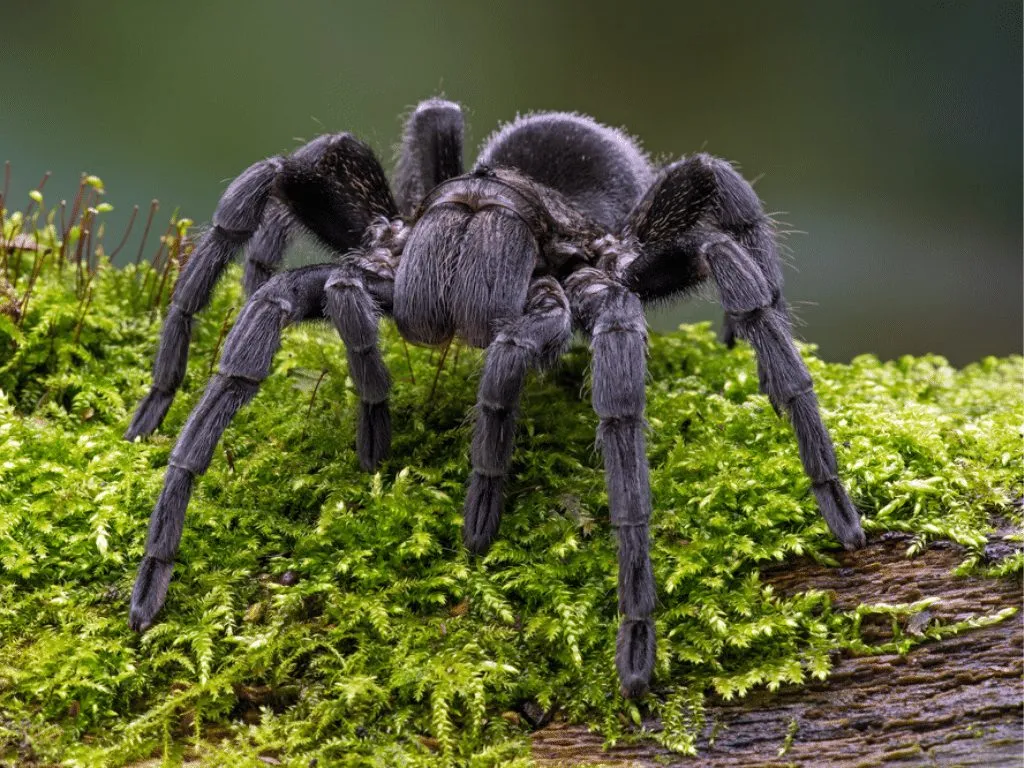Understanding Brazilian Black Tarantula Enclosure Needs
The Brazilian Black Tarantula (Grammostola pulchra) is a captivating species for tarantula enthusiasts. Providing the correct enclosure is crucial for their health, well-being, and longevity. The enclosure size directly impacts a tarantula’s ability to thrive, offering adequate space for movement, burrowing, and exhibiting natural behaviors. An appropriately sized enclosure minimizes stress, reduces the risk of injury, and allows for optimal environmental control, contributing to the overall health and happiness of your Brazilian Black Tarantula. Understanding the factors influencing enclosure size is the first step in ensuring a suitable habitat for your pet.
Factors Influencing Enclosure Size
Several factors influence the ideal enclosure size for a Brazilian Black Tarantula. These include the size and age of the tarantula, the type of substrate used, the need for ventilation, and humidity requirements. Each of these elements plays a vital role in creating a healthy and comfortable environment. A tarantula that is too cramped may become stressed, while one in an enclosure that is too large may have difficulty finding food and feel exposed, leading to similar stress. Therefore, careful consideration of each factor is important to determine the most appropriate enclosure size.
Tarantula Size and Growth
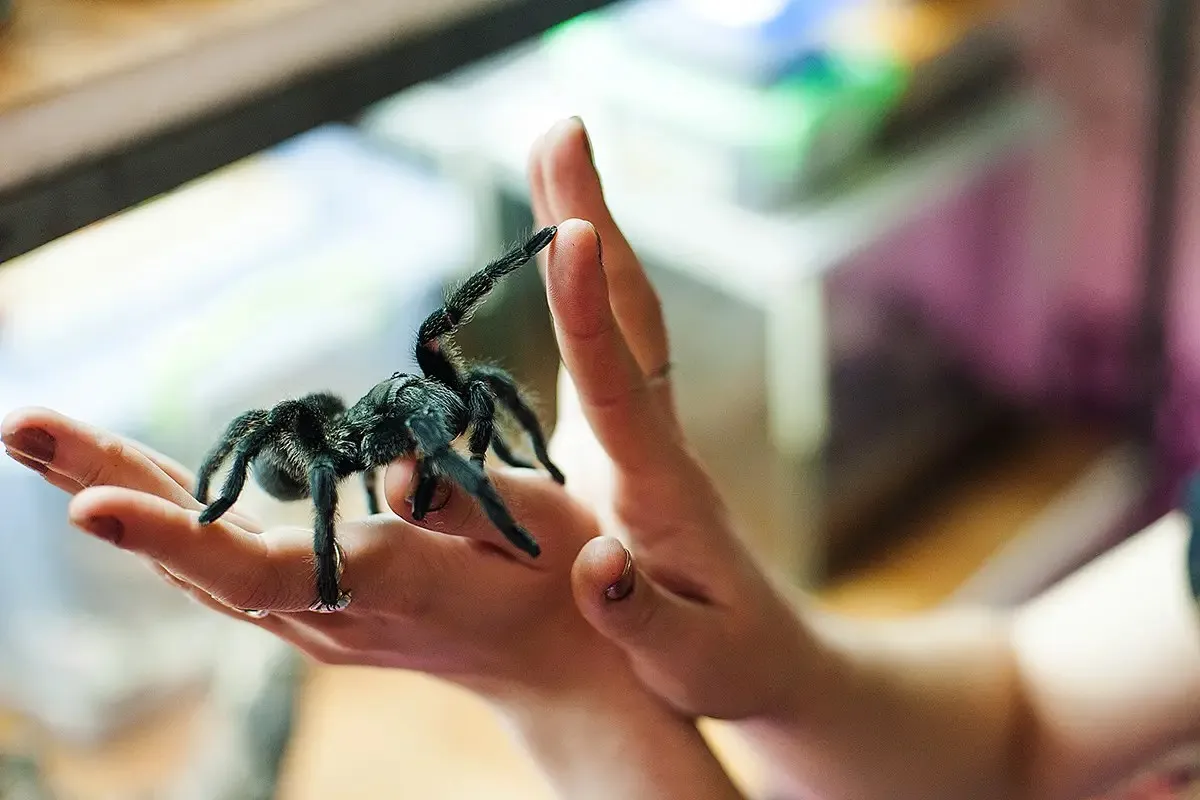
The most important factor determining enclosure size is the tarantula’s current size and its potential for growth. Brazilian Black Tarantulas, like all tarantulas, undergo a series of molts as they grow. Juvenile tarantulas require significantly smaller enclosures than adults. Providing too much space for a small tarantula can make it feel insecure and increase the risk of it getting lost or struggling to find food. As the tarantula molts and grows, the enclosure size should be increased accordingly. Regular monitoring of your tarantula’s size and molting progress is important to ensure the enclosure remains appropriately sized.
Substrate and Vertical Space
The substrate layer within the enclosure also impacts the necessary size. Brazilian Black Tarantulas are terrestrial species that like to burrow. The depth of the substrate should allow for this natural behavior. The enclosure must be tall enough to accommodate the appropriate depth of the substrate. A general rule is to provide a substrate depth equal to at least the tarantula’s leg span. Consider also any additional vertical space required for decorations or for the tarantula to climb. Providing enough vertical space allows the tarantula to feel secure and provide enrichment.
Ventilation and Humidity
Proper ventilation and humidity control are critical aspects of a healthy tarantula enclosure. An appropriately sized enclosure facilitates the maintenance of these environmental conditions. The enclosure should allow for adequate airflow to prevent the buildup of harmful bacteria and mold, especially important for the humid environment Brazilian Black Tarantulas require. Ventilation is usually achieved through strategically placed vents in the enclosure’s lid or sides. The enclosure must also be able to maintain the correct humidity level, which can be achieved by providing a water dish, misting the enclosure, and using appropriate substrate materials that can retain moisture.
Optimal Enclosure Dimensions
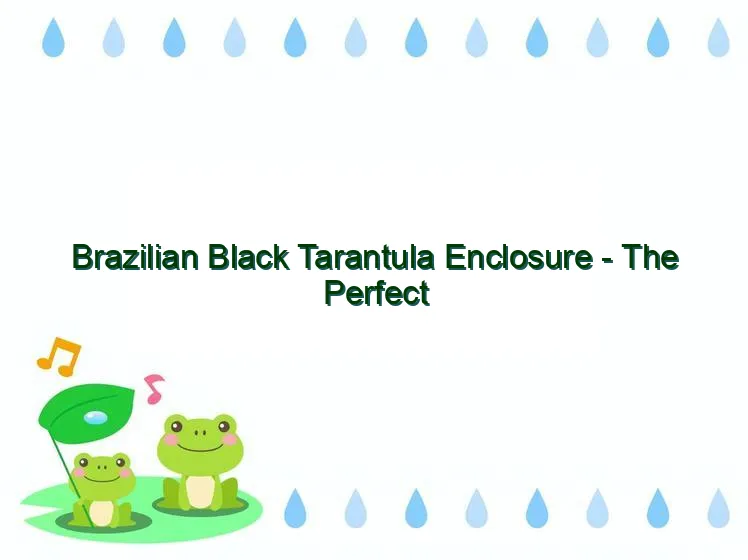
Determining the optimal dimensions for your Brazilian Black Tarantula’s enclosure requires understanding their growth stages. Juvenile tarantulas have very different needs compared to fully grown adults. Therefore, the dimensions need to be adjusted as the tarantula matures. Using the right size enclosure reduces stress and provides a safe and comfortable habitat for your pet. Always remember to prioritize space for burrowing and natural behaviors.
Juvenile Tarantulas
Juvenile Brazilian Black Tarantulas are best housed in smaller enclosures to minimize stress and make it easier for them to find food. A container that is roughly 3-4 times the tarantula’s leg span in width and length is a good starting point. For example, a juvenile tarantula with a leg span of 1 inch might thrive in a container that is 3-4 inches wide and long. A shallow enclosure depth is suitable at this stage. As the tarantula grows, the enclosure will need to be increased gradually in size with each molt.
Adult Tarantulas
Adult Brazilian Black Tarantulas require a considerably larger enclosure to accommodate their full size and burrowing behavior. A general recommendation is an enclosure that is at least 12x12x8 inches for a medium sized adult, but the exact dimensions can vary depending on the size of the individual tarantula. A larger enclosure might be suitable, especially if you plan on providing a lot of burrowing space or decorative elements. Provide a deeper substrate layer (4-6 inches) to allow for deep burrowing. Ensure that the enclosure has secure ventilation and provides easy access for feeding and maintenance.
Enclosure Materials and Types
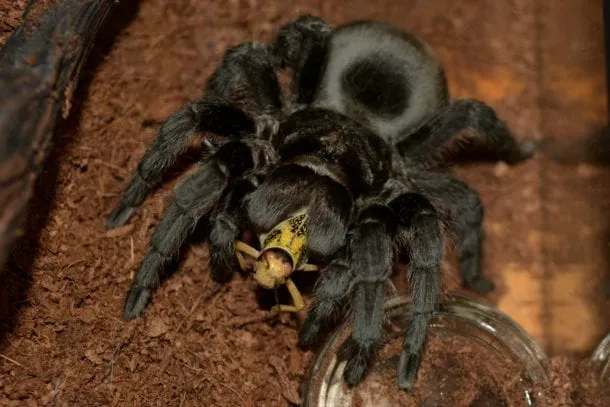
The material used to construct the enclosure impacts its suitability for your Brazilian Black Tarantula. Various options exist, each with its pros and cons regarding durability, ventilation, ease of cleaning, and aesthetic appeal. Selecting the right material is essential to ensure the longevity and health of both the enclosure and your tarantula. Consider the tarantula’s habits and preferences when choosing the enclosure material, as some materials may be better suited for maintaining humidity or providing security than others. Always prioritize the tarantula’s safety and well-being.
Glass Terrariums
Glass terrariums are a popular choice for tarantula enclosures due to their transparency and ease of viewing the tarantula. Glass provides excellent visibility, allowing you to observe your pet’s behavior. Glass terrariums are also relatively easy to clean and maintain. They offer good ventilation options with the addition of mesh lids or ventilation holes. However, glass can be heavy and may require careful handling to avoid breakage. Ensure the lid is secure to prevent escapes. Consider that the glass does not insulate heat as well as other materials, therefore a good temperature gradient may need to be maintained with the help of heat lamps or pads.
Acrylic Enclosures
Acrylic enclosures offer several advantages over glass. They are lighter, more durable, and less prone to shattering. Acrylic also provides better insulation, helping to maintain a more stable temperature and humidity. Acrylic enclosures come in various designs, making it easy to customize the enclosure to your preference. Acrylic also provides excellent visibility, offering clear views of the tarantula. However, acrylic can be more prone to scratches than glass, so careful handling is necessary during cleaning and maintenance. The ventilation and lid security are equally important.
Plastic Containers
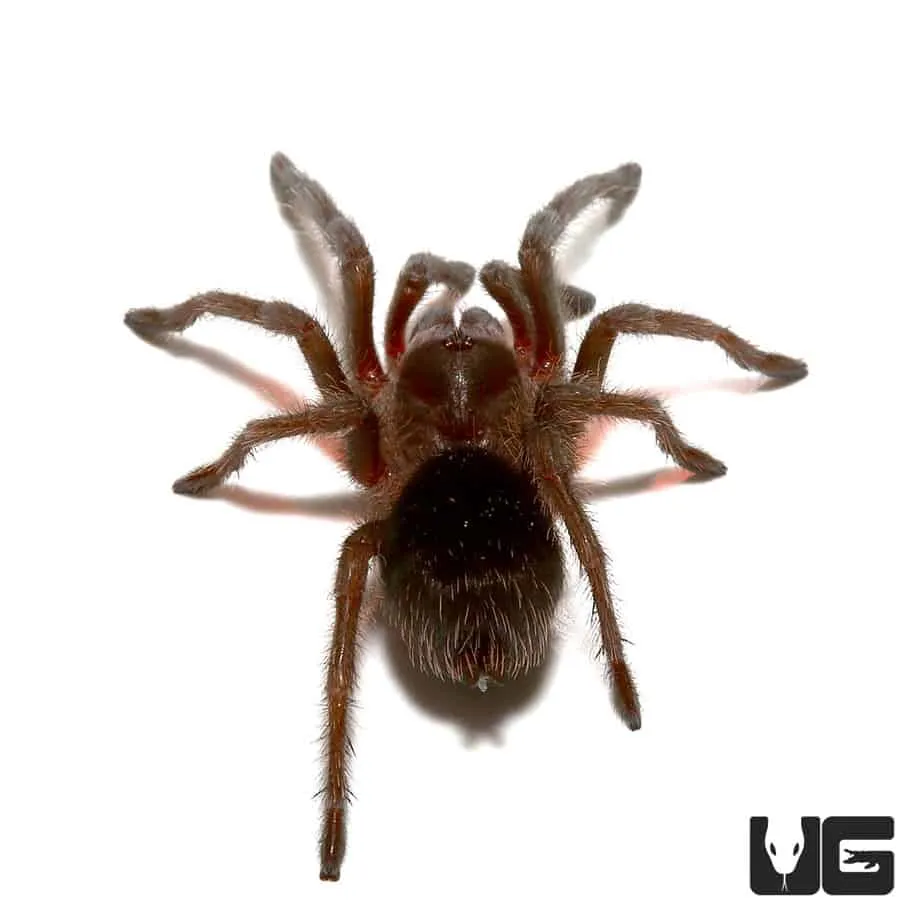
Plastic containers, such as clear plastic tubs or storage boxes, can be a cost-effective and practical option for housing tarantulas, particularly juveniles. They are lightweight, readily available, and often come with secure lids. Ventilation can be easily added by drilling holes in the lid or sides of the container. The transparency of the plastic allows for easy viewing of the tarantula. However, plastic containers may not be as aesthetically pleasing as glass or acrylic enclosures. Ensure the plastic is of appropriate thickness to prevent warping or damage, especially when using heat sources. Always confirm that the plastic is non-toxic and safe for your tarantula.
Decorating the Enclosure
Decorating your Brazilian Black Tarantula’s enclosure is important for providing a stimulating and enriching environment. It also offers essential elements for your pet’s well-being, helping to replicate the tarantula’s natural habitat. By incorporating the right elements, you can create a visually appealing and functional space that enhances your tarantula’s quality of life. When choosing decorations, consider the tarantula’s needs, preferences, and natural behaviors, always prioritizing its safety and well-being.
Essential Decor Elements
Several essential elements can be incorporated into the enclosure to create a suitable habitat. These include hiding spots and burrows, a water dish, and the right substrate. These elements create a stimulating environment and meet the tarantula’s need for safety, moisture, and burrowing opportunities. Careful selection of the elements helps create a visually appealing and functional space that enhances the tarantula’s quality of life. Regularly inspecting and maintaining these elements contributes to the overall health and well-being of your pet.
Hiding Spots and Burrows
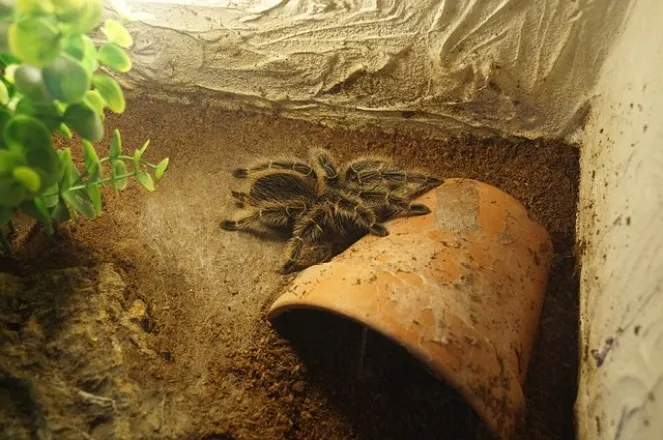
Providing hiding spots and allowing for burrowing is critical for the well-being of your Brazilian Black Tarantula. Tarantulas are naturally shy creatures that feel most secure when they have a place to hide. A hide provides shelter and reduces stress, especially during molting or after feeding. You can provide hiding spots with cork bark, half logs, or commercially available tarantula hides. Encouraging burrowing allows the tarantula to express its natural behaviors. The substrate should be deep enough to allow the tarantula to dig and create its own burrow. These elements make the tarantula feel secure and help to reduce stress.
Water Dish and Humidity
Maintaining the correct humidity level is crucial for the health of a Brazilian Black Tarantula. A water dish provides a constant source of fresh water for drinking. It also helps increase humidity through evaporation. The water dish should be shallow enough to prevent the tarantula from drowning. Consider using a water dish that is stable and difficult to tip over. Regularly refreshing the water and keeping the enclosure clean reduces the risk of mold and bacteria. The humidity level can also be maintained by misting the enclosure regularly or providing moist substrate.
Temperature and Lighting
Maintaining the correct temperature is essential for the health of your Brazilian Black Tarantula. Provide a temperature gradient within the enclosure, with a warmer side and a cooler side, enabling the tarantula to regulate its body temperature. You can use a heat mat or a low-wattage incandescent bulb to provide heat. Place the heat source on one side of the enclosure and monitor the temperature with a thermometer. Avoid placing the heat source directly on the substrate to prevent overheating. Brazilian Black Tarantulas do not require specific lighting, so a low light environment is ideal.
Maintenance and Cleaning
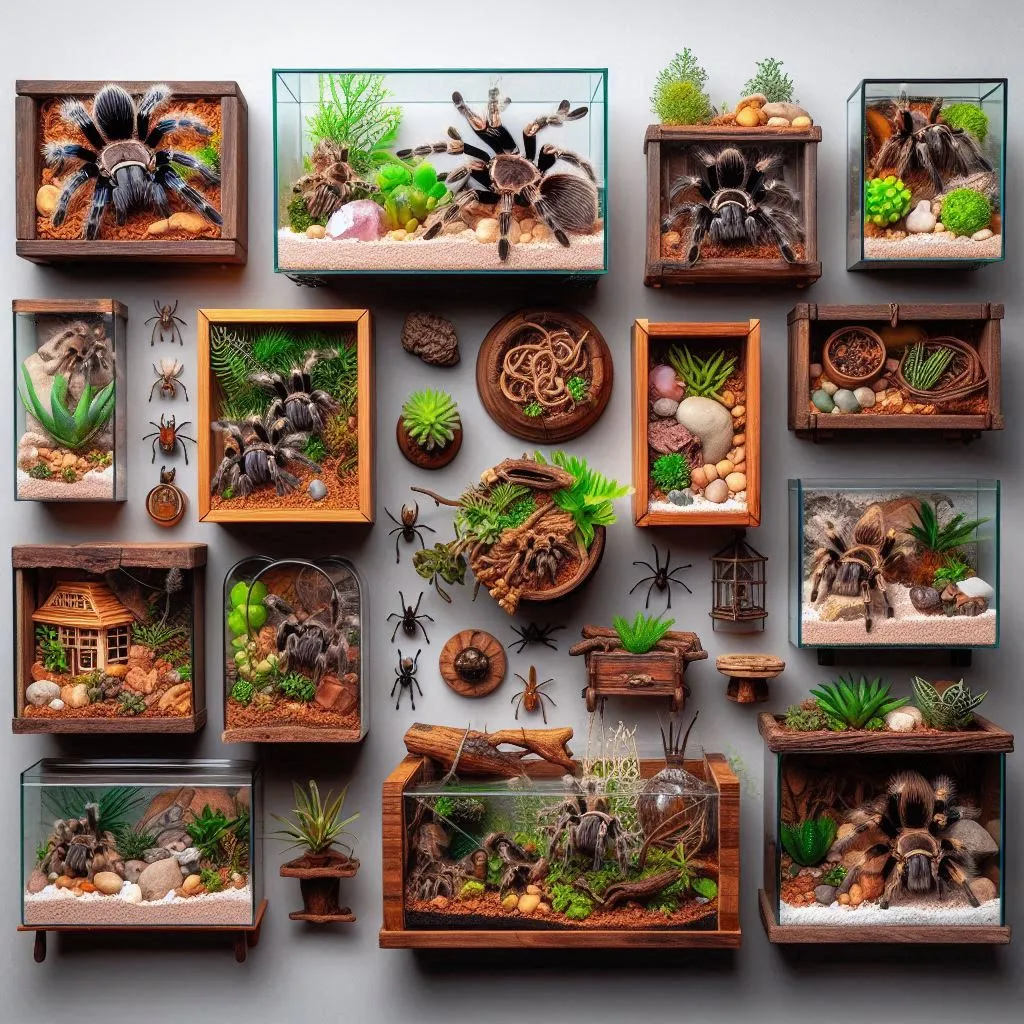
Regular maintenance and cleaning are crucial for the health and well-being of your Brazilian Black Tarantula. A clean enclosure prevents the buildup of harmful bacteria, mold, and other contaminants. Establishing a regular cleaning schedule and paying attention to the substrate and humidity levels is key to a healthy environment for your pet. These practices contribute to the overall health, happiness, and longevity of your tarantula. By following these guidelines, you can create a clean and comfortable home for your tarantula, and keep your pet healthy and thriving.
Regular Cleaning Schedule
Establishing a regular cleaning schedule is essential. Remove any uneaten food, dead insects, and fecal matter promptly. These should be removed daily. Conduct a more thorough cleaning of the enclosure every 1-2 months, depending on the size of the enclosure and the tarantula’s habits. This thorough cleaning includes removing the substrate, cleaning the enclosure, and replacing the substrate with fresh material. Regularly check the water dish and refill it with fresh, clean water. Maintaining a clean enclosure is essential for the health and well-being of your tarantula.
Substrate Replacement
The substrate should be replaced periodically, typically every 3-6 months, depending on the type of substrate used and the tarantula’s habits. The substrate can become contaminated with waste, mold, and bacteria over time, even with regular spot cleaning. Remove the old substrate completely during the deep cleaning. Thoroughly clean and disinfect the enclosure before adding fresh substrate. When replacing the substrate, make sure it is moist (but not soaking wet) and provides adequate burrowing depth. Fresh substrate supports a healthy and thriving environment for your Brazilian Black Tarantula, while proper substrate maintenance reduces the risk of illness and supports the tarantula’s overall well-being.
Monitoring Humidity and Temperature
Regularly monitor the humidity and temperature within the enclosure to ensure they remain within the appropriate ranges. Use a hygrometer to measure the humidity and a thermometer to measure the temperature. The humidity should be maintained around 70-80%, and the temperature should be between 75-85°F (24-29°C). Adjust the humidity by misting the enclosure or adjusting the ventilation. Adjust the temperature by using a heat mat or a low-wattage incandescent bulb. Proper monitoring of humidity and temperature helps maintain a healthy environment for your tarantula.
